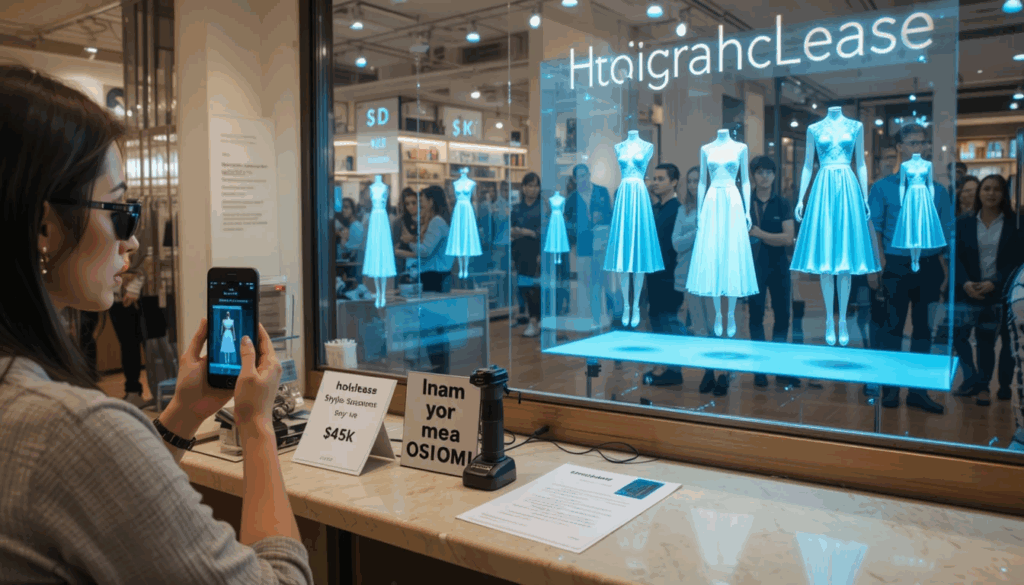The race to implement holographic retail experiences is creating financial tremors for small businesses in 2025. With 68% of consumers demanding AR virtual try-ons (Accenture), boutiques and specialty stores face staggering holographic retail expenses: $20K-$50K for displays, $70/hour for 3D modeling staff, and hidden costs for content creation and maintenance. A Brooklyn sneaker store spent $38K on hologram displays only to discover $12K/year in content updates – threatening their survival.
Why Expenses Are Spiraling
-
Holographic displays require custom 3D scans ($150-$500/product)
-
AR virtual try-ons need continuous calibration for new inventory
-
Specialized 3D modeling staff command premium rates (avg. $45K salary + benefits)
-
60% of early adopters report 30% higher maintenance than projected
3 Budget-Conscious Implementation Strategies
1. Hybrid AR-Holographic Solutions
Layer affordable technologies:
-
Marker-based AR: Use QR codes triggering phone-based try-ons ($5K setup vs. $50K holograms)
-
Projection mapping: Transform mannequins into “holographic” displays using $3K projectors
-
Example: A jewelry store achieved 80% of holographic impact at 20% cost with projection-mapped cases
2. Outsource Creatively
| Cost Driver | Savings Hack |
|---|---|
| 3D modeling staff | Philippines-based freelancers ($12-$25/hour) |
| Content updates | Bulk quarterly updates vs. real-time tweaks |
| Hardware | Refurbished HoloLens 2 units (40% discount) |
3. Monetize the Investment
-
Charge brands for featured holographic placement
-
Sell “digital twin” NFTs of physical products
-
Offer premium booking slots for holographic styling sessions
Case Study: The Thrifty Innovator
Miami’s “Sunset Boutique” launched holographics profitably by:
1️⃣ Leasing displays through HoloLease ($799/month vs. $28K purchase)
2️⃣ Hiring fashion students for 3D scanning ($20/hour)
3️⃣ Adding $5 “holographic styling fee” to appointments
Result: 27% revenue lift with 18-month ROI
Critical Cost Controls
-
Content Templates: Use Adobe Aero to create reusable holographic scenes
-
Energy Efficiency: Opt for LED hologram projectors (60% less power)
-
Maintenance Packages: Negotiate all-inclusive support contracts
The Future of Affordable Holographics
By 2026, expect:
➤ AI-generated 3D models (slashing staff costs)
➤ Projector-as-a-Service subscriptions
➤ Crowdfunded neighborhood hologram hubs
Bottom Line
While holographic retail expenses seem daunting, strategic implementation creates unbeatable experiences. By blending phased tech adoption, creative outsourcing, and revenue-generating features, small retailers can lead the holographic revolution without bankruptcy.



